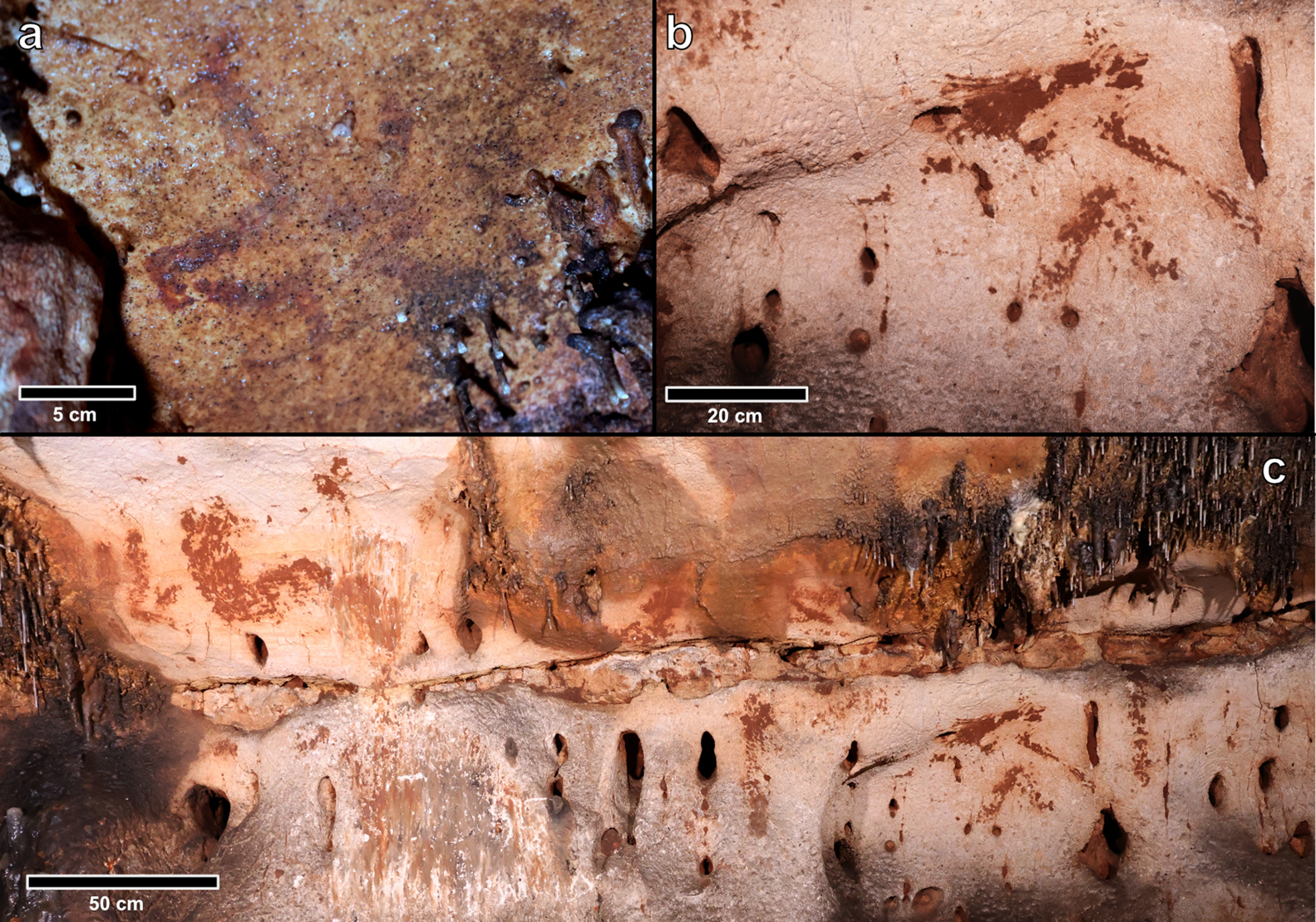
Researchers have found more than 100 paintings dating back at least 24,000 years in a massive cave known as Cova Dones in Spain.
The cave, which is nearly a third of a mile long, is located in Millares near Valencia and has long been visited by hikers. But the cave paintings went unnoticed until their discovery by researchers in June 2021, according to a news release from the University of Southampton.
A study of the cave, led by Aitor Ruiz-Redondo of the University of Zaragoza in Spain and the University of Southampton, was published on September 8 in the journal Antiquity. It described the site as “a major Paleolithic art sanctuary, given the quantity and variety of motifs, and the richness and detail of its technical features.”
Among the 110 discovered paintings and carvings, at least 19 include depictions of animals in three zones of the cave. They include seven horses, seven female red deer, a stag, and two aurochs, considered an extinct wild ancestor of modern domestic cattle. The remaining two animals have not yet been determined.
The location of Cova Dones is pictured on a map. Illustration courtesy of Cambridge University Press
The rest of the art consists of “conventional signs” described as rectangles and meanders, several panels of “macaroni” or “flutings” made with either fingers or tools dragged across a soft surface, isolated lines, and poorly preserved unidentified paintings.
“The variability and rarity of the technical features of the artworks are noteworthy because the assemblage includes different types of engravings and paintings,” the researchers said.
The painting technique was described as the application of red clay, found on the floor, onto the walls instead of the usual diluted ochre or manganese powder used at the time. More than 80 of the paintings were made using this technique.
Most of the rest are engravings, which include some that feature shading by scraping mondmilch, a type of limestone precipitate also known as “moonmilk” or “cave milk,” on the surface of the walls.
“When we saw the first painted auroch, we immediately acknowledged it was important,” Ruiz-Redondo said in a statement. “However, the actual ‘shock’ of realizing its significance came long after the first discovery. Once we began the proper systematic survey, we realized we were facing a major cave art site like the ones that can be found elsewhere in Cantabrian Spain, southern France or Andalusia, but that totally lack in this territory.”
More Trending Stories: